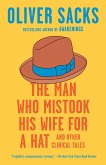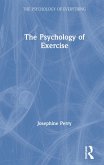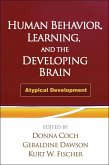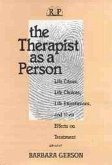- Broschiertes Buch
- Merkliste
- Auf die Merkliste
- Bewerten Bewerten
- Teilen
- Produkt teilen
- Produkterinnerung
- Produkterinnerung
Kathleen Stassen Berger and new co-author Kendra Thomas tell the story of human development in an engaging, accessible narrative style - with signature personal anecdotes, engaging case studies, and findings from thousands of articles and datasets. Their new critical thinking framework teaches students to "think like a developmentalist" to apply developmental science principles to a range of scenarios - whether they are studying attachment or aging, puberty or parenting. Five principles of developmental science are introduced in Chapter 1, repeated throughout the text, and connected to chapter…mehr
Andere Kunden interessierten sich auch für
![Sokratischer Dialog im Alltag - Das Praxisbuch: Wie Sie mit der sokratischen Gesprächsführung negative Glaubenssätze aufdecken und Ängste überwinden für mehr Selbstbewusstsein und innere Ruhe Sokratischer Dialog im Alltag - Das Praxisbuch: Wie Sie mit der sokratischen Gesprächsführung negative Glaubenssätze aufdecken und Ängste überwinden für mehr Selbstbewusstsein und innere Ruhe]() Ruben GermerotSokratischer Dialog im Alltag - Das Praxisbuch: Wie Sie mit der sokratischen Gesprächsführung negative Glaubenssätze aufdecken und Ängste überwinden für mehr Selbstbewusstsein und innere Ruhe15,90 €
Ruben GermerotSokratischer Dialog im Alltag - Das Praxisbuch: Wie Sie mit der sokratischen Gesprächsführung negative Glaubenssätze aufdecken und Ängste überwinden für mehr Selbstbewusstsein und innere Ruhe15,90 €![The Man Who Mistook His Wife for a Hat The Man Who Mistook His Wife for a Hat]() Oliver SacksThe Man Who Mistook His Wife for a Hat23,99 €
Oliver SacksThe Man Who Mistook His Wife for a Hat23,99 €![Life-Span Maintenance of Knowledge Life-Span Maintenance of Knowledge]() Harry P BahrickLife-Span Maintenance of Knowledge80,99 €
Harry P BahrickLife-Span Maintenance of Knowledge80,99 €![The Psychology of Exercise The Psychology of Exercise]() Josephine PerryThe Psychology of Exercise164,99 €
Josephine PerryThe Psychology of Exercise164,99 €![Human Behavior, Learning, and the Developing Brain Human Behavior, Learning, and the Developing Brain]() Human Behavior, Learning, and the Developing Brain49,99 €
Human Behavior, Learning, and the Developing Brain49,99 €![The Therapist as a Person The Therapist as a Person]() The Therapist as a Person69,99 €
The Therapist as a Person69,99 €![Strategic Thinking in Complex Problem Solving Strategic Thinking in Complex Problem Solving]() Arnaud ChevallierStrategic Thinking in Complex Problem Solving97,99 €
Arnaud ChevallierStrategic Thinking in Complex Problem Solving97,99 €-
-
-
Kathleen Stassen Berger and new co-author Kendra Thomas tell the story of human development in an engaging, accessible narrative style - with signature personal anecdotes, engaging case studies, and findings from thousands of articles and datasets. Their new critical thinking framework teaches students to "think like a developmentalist" to apply developmental science principles to a range of scenarios - whether they are studying attachment or aging, puberty or parenting. Five principles of developmental science are introduced in Chapter 1, repeated throughout the text, and connected to chapter content in a way that helps students remember and transfer their learning to other courses and professional settings.
Produktdetails
- Produktdetails
- Verlag: Macmillan Learning
- Thirteenth Edition
- Erscheinungstermin: 31. Oktober 2025
- Englisch
- Abmessung: 25mm x 25mm x 25mm
- ISBN-13: 9781319615741
- ISBN-10: 1319615740
- Artikelnr.: 75668926
- Herstellerkennzeichnung
- Libri GmbH
- Europaallee 1
- 36244 Bad Hersfeld
- gpsr@libri.de
- Verlag: Macmillan Learning
- Thirteenth Edition
- Erscheinungstermin: 31. Oktober 2025
- Englisch
- Abmessung: 25mm x 25mm x 25mm
- ISBN-13: 9781319615741
- ISBN-10: 1319615740
- Artikelnr.: 75668926
- Herstellerkennzeichnung
- Libri GmbH
- Europaallee 1
- 36244 Bad Hersfeld
- gpsr@libri.de
Kathleen Stassen Berger; Kendra Thomas
Discover What's Inside! Click here to review a sample chapter, Chapter 1:
The Science of Human Development, from The Developing Person Through the
Life Span, Thirteenth Edition.
PART 1 The Beginnings
Chapter 1 The Science of Human Development
1.1 Thinking Like a Developmentalist
1.2 Doing Science
Chapter 2 Theories
2.1 Theories of Development
2.2 What Theories Contribute
Chapter 3 The New Genetics
3.1 The Genetic Code
3.2 New Cells, New People
3.3 From Genotype to Phenotype
3.4 Chromosomal and Genetic Conditions
Chapter 4 Prenatal Development and Birth
4.1 Prenatal Development
4.2 Birth
4.3 Risks and Protections
4.4 The New Family
PART 2 The First Two Years
Chapter 5 The First Two Years: Biosocial Development
5.1 Body Changes
5.2 Perceiving and Moving
5.3 Surviving in Good Health
Chapter 6 The First Two Years: Cognitive Development
6.1 Quick Learners
6.2 Active Learners
6.3 Social Learners
Chapter 7 The First Two Years: Psychosocial Development
7.1 Emotional Development in Context
7.2 Social Bonds
7.3 Who Cares for Baby?
PART 3 Early Childhood
Chapter 8 Early Childhood: Biosocial Development
8.1 Body Changes
8.2 Brain Growth
8.3 Avoidable Injury
8.4 Child Maltreatment
Chapter 9 Early Childhood: Cognitive Development
9.1 Thinking During Early Childhood
9.2 Constructed Cognition
9.3 Language Learning
9.4 Early-Childhood Schooling
Chapter 10 Early Childhood: Psychosocial Development
10.1 Emotional Development
10.2 Play
10.3 Challenges for Caregivers
10.4 Becoming Boys and Girls: Sex and Gender
PART 4 Middle Childhood
Chapter 11 Middle Childhood: Biosocial Development
11.1 A Healthy Time
11.2 Brain Development
11.3 Children with Distinct Educational Needs
Chapter 12 Middle Childhood: Cognitive Development
12.1 Thinking
12.2 Language
12.3 Teaching and Learning
Chapter 13 Middle Childhood: Psychosocial Development
13.1 The Nature of the Child
13.2 Families During Middle Childhood
13.3 Other Children
PART 5 Adolescence
Chapter 14 Adolescence: Biosocial Development
14.1 Puberty and Hormones
14.2 Growth and Nutrition
14.3 Sexual Maturation
Chapter 15 Adolescence: Cognitive Development
15.1 Cognition and the Brain
15.2 The Brain and Mental Health
15.3 Secondary Education
Chapter 16 Adolescence: Psychosocial Development
16.1 Identity
16.2 Close Relationships
16.3 Anxiety, Depression, and Aggression
PART 6 Emerging Adulthood
Chapter 17 Emerging Adulthood: Biosocial Development
17.1 Biological Universals
17.2 Health and Sickness
17.3 Risk-Taking
Chapter 18 Emerging Adulthood: Cognitive Development
18.1 Stages and Ages
18.2 Ethics and Religion
18.3 Higher Education
Chapter 19 Emerging Adulthood: Psychosocial Development
19.1 Identity Ongoing
19.2 Social Connections
19.3 Romantic Partnership
PART 7 Adulthood
Chapter 20 Adulthood: Biosocial Development
20.1 Growing Older
20.2 Body Systems
20.3 Habits: Good and Bad
Chapter 21 Adulthood: Cognitive Development
21.1 Adult Intelligence
21.2 Cognitive Hazards
21.3 Choices in Thinking
Chapter 22 Adulthood: Psychosocial Development
22.1 Personality Development in Adulthood
22.2 Intimacy: Connecting with Others
22.3 Generativity: The Work of Adulthood
PART 8 Late Adulthood
Chapter 23 Late Adulthood: Biosocial Development
23.1 Demography and Prejudice
23.2 Systems and Choices
23.3 Theories of Aging
Chapter 24 Late Adulthood: Cognitive Development
24.1 Cognitive Processing in Adulthood
24.2 Neurocognitive Disorders
24.3 Cognitive Gains
Chapter 25 Late Adulthood: Psychosocial Development
25.1 Theories of Late Adulthood
25.2 Activity in Late Adulthood
25.3 Home and Care
Epilogue: Death, Dying, and Affirmation of Life
EP.1 Living with Death
EP.2 A Good Death
EP.3 Grief and Hope
Appendix: More About Research Methods
Glossary
References
The Science of Human Development, from The Developing Person Through the
Life Span, Thirteenth Edition.
PART 1 The Beginnings
Chapter 1 The Science of Human Development
1.1 Thinking Like a Developmentalist
1.2 Doing Science
Chapter 2 Theories
2.1 Theories of Development
2.2 What Theories Contribute
Chapter 3 The New Genetics
3.1 The Genetic Code
3.2 New Cells, New People
3.3 From Genotype to Phenotype
3.4 Chromosomal and Genetic Conditions
Chapter 4 Prenatal Development and Birth
4.1 Prenatal Development
4.2 Birth
4.3 Risks and Protections
4.4 The New Family
PART 2 The First Two Years
Chapter 5 The First Two Years: Biosocial Development
5.1 Body Changes
5.2 Perceiving and Moving
5.3 Surviving in Good Health
Chapter 6 The First Two Years: Cognitive Development
6.1 Quick Learners
6.2 Active Learners
6.3 Social Learners
Chapter 7 The First Two Years: Psychosocial Development
7.1 Emotional Development in Context
7.2 Social Bonds
7.3 Who Cares for Baby?
PART 3 Early Childhood
Chapter 8 Early Childhood: Biosocial Development
8.1 Body Changes
8.2 Brain Growth
8.3 Avoidable Injury
8.4 Child Maltreatment
Chapter 9 Early Childhood: Cognitive Development
9.1 Thinking During Early Childhood
9.2 Constructed Cognition
9.3 Language Learning
9.4 Early-Childhood Schooling
Chapter 10 Early Childhood: Psychosocial Development
10.1 Emotional Development
10.2 Play
10.3 Challenges for Caregivers
10.4 Becoming Boys and Girls: Sex and Gender
PART 4 Middle Childhood
Chapter 11 Middle Childhood: Biosocial Development
11.1 A Healthy Time
11.2 Brain Development
11.3 Children with Distinct Educational Needs
Chapter 12 Middle Childhood: Cognitive Development
12.1 Thinking
12.2 Language
12.3 Teaching and Learning
Chapter 13 Middle Childhood: Psychosocial Development
13.1 The Nature of the Child
13.2 Families During Middle Childhood
13.3 Other Children
PART 5 Adolescence
Chapter 14 Adolescence: Biosocial Development
14.1 Puberty and Hormones
14.2 Growth and Nutrition
14.3 Sexual Maturation
Chapter 15 Adolescence: Cognitive Development
15.1 Cognition and the Brain
15.2 The Brain and Mental Health
15.3 Secondary Education
Chapter 16 Adolescence: Psychosocial Development
16.1 Identity
16.2 Close Relationships
16.3 Anxiety, Depression, and Aggression
PART 6 Emerging Adulthood
Chapter 17 Emerging Adulthood: Biosocial Development
17.1 Biological Universals
17.2 Health and Sickness
17.3 Risk-Taking
Chapter 18 Emerging Adulthood: Cognitive Development
18.1 Stages and Ages
18.2 Ethics and Religion
18.3 Higher Education
Chapter 19 Emerging Adulthood: Psychosocial Development
19.1 Identity Ongoing
19.2 Social Connections
19.3 Romantic Partnership
PART 7 Adulthood
Chapter 20 Adulthood: Biosocial Development
20.1 Growing Older
20.2 Body Systems
20.3 Habits: Good and Bad
Chapter 21 Adulthood: Cognitive Development
21.1 Adult Intelligence
21.2 Cognitive Hazards
21.3 Choices in Thinking
Chapter 22 Adulthood: Psychosocial Development
22.1 Personality Development in Adulthood
22.2 Intimacy: Connecting with Others
22.3 Generativity: The Work of Adulthood
PART 8 Late Adulthood
Chapter 23 Late Adulthood: Biosocial Development
23.1 Demography and Prejudice
23.2 Systems and Choices
23.3 Theories of Aging
Chapter 24 Late Adulthood: Cognitive Development
24.1 Cognitive Processing in Adulthood
24.2 Neurocognitive Disorders
24.3 Cognitive Gains
Chapter 25 Late Adulthood: Psychosocial Development
25.1 Theories of Late Adulthood
25.2 Activity in Late Adulthood
25.3 Home and Care
Epilogue: Death, Dying, and Affirmation of Life
EP.1 Living with Death
EP.2 A Good Death
EP.3 Grief and Hope
Appendix: More About Research Methods
Glossary
References
Discover What's Inside! Click here to review a sample chapter, Chapter 1:
The Science of Human Development, from The Developing Person Through the
Life Span, Thirteenth Edition.
PART 1 The Beginnings
Chapter 1 The Science of Human Development
1.1 Thinking Like a Developmentalist
1.2 Doing Science
Chapter 2 Theories
2.1 Theories of Development
2.2 What Theories Contribute
Chapter 3 The New Genetics
3.1 The Genetic Code
3.2 New Cells, New People
3.3 From Genotype to Phenotype
3.4 Chromosomal and Genetic Conditions
Chapter 4 Prenatal Development and Birth
4.1 Prenatal Development
4.2 Birth
4.3 Risks and Protections
4.4 The New Family
PART 2 The First Two Years
Chapter 5 The First Two Years: Biosocial Development
5.1 Body Changes
5.2 Perceiving and Moving
5.3 Surviving in Good Health
Chapter 6 The First Two Years: Cognitive Development
6.1 Quick Learners
6.2 Active Learners
6.3 Social Learners
Chapter 7 The First Two Years: Psychosocial Development
7.1 Emotional Development in Context
7.2 Social Bonds
7.3 Who Cares for Baby?
PART 3 Early Childhood
Chapter 8 Early Childhood: Biosocial Development
8.1 Body Changes
8.2 Brain Growth
8.3 Avoidable Injury
8.4 Child Maltreatment
Chapter 9 Early Childhood: Cognitive Development
9.1 Thinking During Early Childhood
9.2 Constructed Cognition
9.3 Language Learning
9.4 Early-Childhood Schooling
Chapter 10 Early Childhood: Psychosocial Development
10.1 Emotional Development
10.2 Play
10.3 Challenges for Caregivers
10.4 Becoming Boys and Girls: Sex and Gender
PART 4 Middle Childhood
Chapter 11 Middle Childhood: Biosocial Development
11.1 A Healthy Time
11.2 Brain Development
11.3 Children with Distinct Educational Needs
Chapter 12 Middle Childhood: Cognitive Development
12.1 Thinking
12.2 Language
12.3 Teaching and Learning
Chapter 13 Middle Childhood: Psychosocial Development
13.1 The Nature of the Child
13.2 Families During Middle Childhood
13.3 Other Children
PART 5 Adolescence
Chapter 14 Adolescence: Biosocial Development
14.1 Puberty and Hormones
14.2 Growth and Nutrition
14.3 Sexual Maturation
Chapter 15 Adolescence: Cognitive Development
15.1 Cognition and the Brain
15.2 The Brain and Mental Health
15.3 Secondary Education
Chapter 16 Adolescence: Psychosocial Development
16.1 Identity
16.2 Close Relationships
16.3 Anxiety, Depression, and Aggression
PART 6 Emerging Adulthood
Chapter 17 Emerging Adulthood: Biosocial Development
17.1 Biological Universals
17.2 Health and Sickness
17.3 Risk-Taking
Chapter 18 Emerging Adulthood: Cognitive Development
18.1 Stages and Ages
18.2 Ethics and Religion
18.3 Higher Education
Chapter 19 Emerging Adulthood: Psychosocial Development
19.1 Identity Ongoing
19.2 Social Connections
19.3 Romantic Partnership
PART 7 Adulthood
Chapter 20 Adulthood: Biosocial Development
20.1 Growing Older
20.2 Body Systems
20.3 Habits: Good and Bad
Chapter 21 Adulthood: Cognitive Development
21.1 Adult Intelligence
21.2 Cognitive Hazards
21.3 Choices in Thinking
Chapter 22 Adulthood: Psychosocial Development
22.1 Personality Development in Adulthood
22.2 Intimacy: Connecting with Others
22.3 Generativity: The Work of Adulthood
PART 8 Late Adulthood
Chapter 23 Late Adulthood: Biosocial Development
23.1 Demography and Prejudice
23.2 Systems and Choices
23.3 Theories of Aging
Chapter 24 Late Adulthood: Cognitive Development
24.1 Cognitive Processing in Adulthood
24.2 Neurocognitive Disorders
24.3 Cognitive Gains
Chapter 25 Late Adulthood: Psychosocial Development
25.1 Theories of Late Adulthood
25.2 Activity in Late Adulthood
25.3 Home and Care
Epilogue: Death, Dying, and Affirmation of Life
EP.1 Living with Death
EP.2 A Good Death
EP.3 Grief and Hope
Appendix: More About Research Methods
Glossary
References
The Science of Human Development, from The Developing Person Through the
Life Span, Thirteenth Edition.
PART 1 The Beginnings
Chapter 1 The Science of Human Development
1.1 Thinking Like a Developmentalist
1.2 Doing Science
Chapter 2 Theories
2.1 Theories of Development
2.2 What Theories Contribute
Chapter 3 The New Genetics
3.1 The Genetic Code
3.2 New Cells, New People
3.3 From Genotype to Phenotype
3.4 Chromosomal and Genetic Conditions
Chapter 4 Prenatal Development and Birth
4.1 Prenatal Development
4.2 Birth
4.3 Risks and Protections
4.4 The New Family
PART 2 The First Two Years
Chapter 5 The First Two Years: Biosocial Development
5.1 Body Changes
5.2 Perceiving and Moving
5.3 Surviving in Good Health
Chapter 6 The First Two Years: Cognitive Development
6.1 Quick Learners
6.2 Active Learners
6.3 Social Learners
Chapter 7 The First Two Years: Psychosocial Development
7.1 Emotional Development in Context
7.2 Social Bonds
7.3 Who Cares for Baby?
PART 3 Early Childhood
Chapter 8 Early Childhood: Biosocial Development
8.1 Body Changes
8.2 Brain Growth
8.3 Avoidable Injury
8.4 Child Maltreatment
Chapter 9 Early Childhood: Cognitive Development
9.1 Thinking During Early Childhood
9.2 Constructed Cognition
9.3 Language Learning
9.4 Early-Childhood Schooling
Chapter 10 Early Childhood: Psychosocial Development
10.1 Emotional Development
10.2 Play
10.3 Challenges for Caregivers
10.4 Becoming Boys and Girls: Sex and Gender
PART 4 Middle Childhood
Chapter 11 Middle Childhood: Biosocial Development
11.1 A Healthy Time
11.2 Brain Development
11.3 Children with Distinct Educational Needs
Chapter 12 Middle Childhood: Cognitive Development
12.1 Thinking
12.2 Language
12.3 Teaching and Learning
Chapter 13 Middle Childhood: Psychosocial Development
13.1 The Nature of the Child
13.2 Families During Middle Childhood
13.3 Other Children
PART 5 Adolescence
Chapter 14 Adolescence: Biosocial Development
14.1 Puberty and Hormones
14.2 Growth and Nutrition
14.3 Sexual Maturation
Chapter 15 Adolescence: Cognitive Development
15.1 Cognition and the Brain
15.2 The Brain and Mental Health
15.3 Secondary Education
Chapter 16 Adolescence: Psychosocial Development
16.1 Identity
16.2 Close Relationships
16.3 Anxiety, Depression, and Aggression
PART 6 Emerging Adulthood
Chapter 17 Emerging Adulthood: Biosocial Development
17.1 Biological Universals
17.2 Health and Sickness
17.3 Risk-Taking
Chapter 18 Emerging Adulthood: Cognitive Development
18.1 Stages and Ages
18.2 Ethics and Religion
18.3 Higher Education
Chapter 19 Emerging Adulthood: Psychosocial Development
19.1 Identity Ongoing
19.2 Social Connections
19.3 Romantic Partnership
PART 7 Adulthood
Chapter 20 Adulthood: Biosocial Development
20.1 Growing Older
20.2 Body Systems
20.3 Habits: Good and Bad
Chapter 21 Adulthood: Cognitive Development
21.1 Adult Intelligence
21.2 Cognitive Hazards
21.3 Choices in Thinking
Chapter 22 Adulthood: Psychosocial Development
22.1 Personality Development in Adulthood
22.2 Intimacy: Connecting with Others
22.3 Generativity: The Work of Adulthood
PART 8 Late Adulthood
Chapter 23 Late Adulthood: Biosocial Development
23.1 Demography and Prejudice
23.2 Systems and Choices
23.3 Theories of Aging
Chapter 24 Late Adulthood: Cognitive Development
24.1 Cognitive Processing in Adulthood
24.2 Neurocognitive Disorders
24.3 Cognitive Gains
Chapter 25 Late Adulthood: Psychosocial Development
25.1 Theories of Late Adulthood
25.2 Activity in Late Adulthood
25.3 Home and Care
Epilogue: Death, Dying, and Affirmation of Life
EP.1 Living with Death
EP.2 A Good Death
EP.3 Grief and Hope
Appendix: More About Research Methods
Glossary
References








